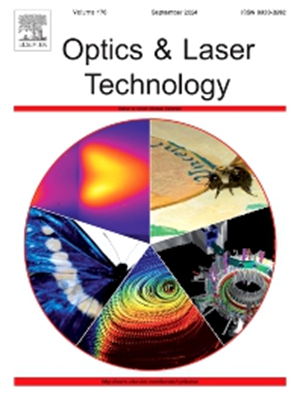A novel method for high dynamic range optical measurement with single shot by multi-view stereo
IF 4.6
2区 物理与天体物理
Q1 OPTICS
引用次数: 0
Abstract
Due to the limited dynamic range of cameras, reconstruction tasks on high dynamic range surfaces often exhibit overexposed and underexposed regions in the captured images, compromising measurement accuracy and completeness. Existing high dynamic range measurement techniques perform 3D reconstruction directly using image intensity or multi-exposure fusion methods. These techniques cannot simultaneously meet the requirements of single-shot measurement, high precision, high completeness, and ease of use. In this article, we propose a novel measurement method with single shot to address these challenges. Different from existing methods, a multi-view stereo pipeline is proposed to fully utilize the properly exposed areas of different views. By multi-view matching based on photometric and geometric consistency, the depth and normal vector for each pixel in every view will be obtained. The depth and normal vector can be combined into a spatial slanted plane, initializing the first-order shape function parameters. A multi-view digital speckle correlation method is proposed to optimize the plane parameters. Finally, the plane parameters are integrated to produce the depth map fusion. A four-camera measurement system with a photolithographic speckle projection module is developed for experimental validation. Extensive quantitative and qualitative experiments demonstrate that the proposed method achieves the measurement accuracy of 0.04–0.07 mm, meeting the requirements of industrial applications.
一种多视点立体单镜头高动态范围光学测量的新方法
由于相机的动态范围有限,在高动态范围表面上的重建任务通常会在捕获的图像中表现出过度曝光和曝光不足的区域,从而影响测量的准确性和完整性。现有的高动态范围测量技术直接使用图像强度或多曝光融合方法进行3D重建。这些技术不能同时满足单次测量、高精度、高完整性和易用性的要求。在本文中,我们提出了一种新的单镜头测量方法来解决这些挑战。与现有方法不同,提出了一种多视图立体管道,以充分利用不同视图的适当暴露区域。通过基于光度一致性和几何一致性的多视图匹配,获得每个视图中每个像素的深度和法向量。深度和法向量可以组合成一个空间斜面,初始化一阶形状函数参数。提出了一种多视点数字散斑相关的平面参数优化方法。最后,对平面参数进行融合,得到深度图融合。研制了一种带有光刻散斑投影模块的四相机测量系统,并进行了实验验证。大量的定量和定性实验表明,该方法的测量精度为0.04 ~ 0.07 mm,满足工业应用的要求。
本文章由计算机程序翻译,如有差异,请以英文原文为准。
求助全文
约1分钟内获得全文
求助全文
来源期刊
CiteScore
8.50
自引率
10.00%
发文量
1060
审稿时长
3.4 months
期刊介绍:
Optics & Laser Technology aims to provide a vehicle for the publication of a broad range of high quality research and review papers in those fields of scientific and engineering research appertaining to the development and application of the technology of optics and lasers. Papers describing original work in these areas are submitted to rigorous refereeing prior to acceptance for publication.
The scope of Optics & Laser Technology encompasses, but is not restricted to, the following areas:
•development in all types of lasers
•developments in optoelectronic devices and photonics
•developments in new photonics and optical concepts
•developments in conventional optics, optical instruments and components
•techniques of optical metrology, including interferometry and optical fibre sensors
•LIDAR and other non-contact optical measurement techniques, including optical methods in heat and fluid flow
•applications of lasers to materials processing, optical NDT display (including holography) and optical communication
•research and development in the field of laser safety including studies of hazards resulting from the applications of lasers (laser safety, hazards of laser fume)
•developments in optical computing and optical information processing
•developments in new optical materials
•developments in new optical characterization methods and techniques
•developments in quantum optics
•developments in light assisted micro and nanofabrication methods and techniques
•developments in nanophotonics and biophotonics
•developments in imaging processing and systems

 求助内容:
求助内容: 应助结果提醒方式:
应助结果提醒方式:


